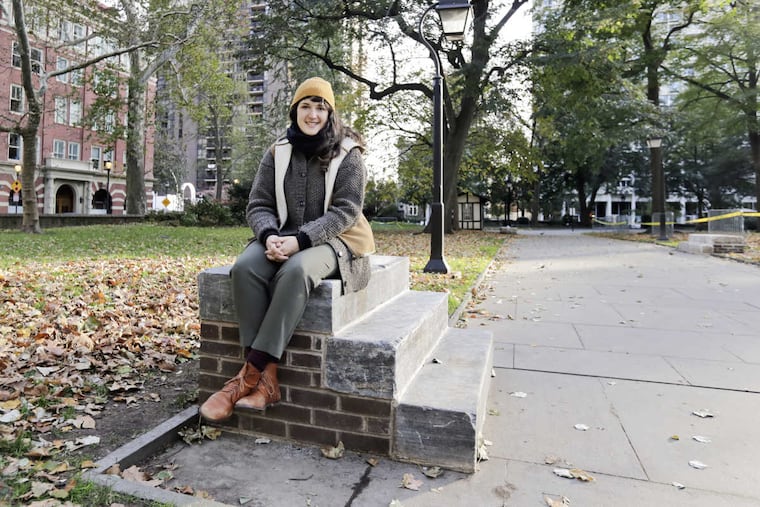Preserving Philly stoops, and stoop culture, into the future
"In a city like Philly, everything has a story. There's just so much history. It's what makes this city great, and we should be doing everything we can to preserve that instead of just wiping it out."

For visual artist Kaitlin Pomerantz, Philadelphia's stoops are so compelling, even discarded ones are worth saving.
"I was excited when I moved here a decade ago and saw that Philly was equally, if not more, of a stoop city," said Pomerantz, a native New Yorker (forgive her). "People responded to the specific histories."
For six months, she collected abandoned stoops, feeding a desire to preserve pieces of the city's heritage. The 12 stoops she eventually salvaged lined Washington Square this fall as part of the Mural Arts Monument Lab project. Now, they've been rescued yet again, and are on their way to new homes.
"In a city like Philly, everything has a story," Pomerantz said. "There's just so much history. It's what makes this city great, and we should be doing everything we can to preserve that instead of just wiping it out."
After watching the physical space of the city's historic neighborhoods rapidly change, and noticing remnants of classic Philly buildings being tossed aside, Pomerantz decided to act.
The concrete, marble, and brick installations she collected were refurbished into a public art project called On the Threshold. The display of salvaged stoops (or, as some locals call them, steps) was intended as a temporary monument to the "threshold between private and public space," which she said "functions as a site of social interaction, of relaxation, and of participation."
The idea was to create gathering spots in the park out of the recovered stoops. But now that the project is over — the display was removed from Washington Square on Sunday — the question becomes: What happens to the rescued stoops?
Luckily, she said, some local agencies swooped in for the save.
A few are being sent to Emerald Park, at 2305 Emerald St., and to North Philly Peace Park, at 2200 Jefferson St.
Charles Croce, executive director and CEO of the Philadelphia History Museum, said the museum had adopted four of them, including one rescued from the first women's medical college, in East Falls.
"We like those in terms of the history of the city," he said.
The museum plans to move the stoops to its garden area, which will be open to the public in the spring.
Croce said the museum recently considered an exhibit focused on stoops and steps, riffing on the idea of Philadelphia as a city of neighborhoods. The plan was to build a stoop inside the museum, with the aim of bringing people in to sit and tell stories. But why build artificial stoops when Pomerantz has procured an entire collection?
"The emphasis on the American Revolution and all of that is fine," he said. "But the city certainly has a longer history that predates that, but also, history is made every day on stoops and steps like these."